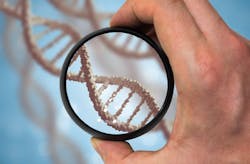It is now widely understood that cancer is a disease of acquired defects in genes and gene function. An article published February 9 in Science, and authored by Andrew Feinberg, M.D., of the Johns Hopkins Kimmel Cancer Center and the Institute for Basic Biomedical Sciences (IBBS) and Andre Levchenko, Sc.D., M.S., of the Yale School of Engineering and Applied Science, addresses new quantitative approaches to better define and measure these defects in gene function, known as epigenetics, and their interplay with the genetic landscape of cancer.
Epigenetics and its ability to turn genes on and off through chemical changes to regions of genes and the way DNA is packaged inside the cell nucleus is a key feature of many biological processes, such as embryo development. In cancer development, Feinberg explains, epigenetic changes promote phenotypic plasticity, the continued change in tumor cell behavior that helps cancer invade surrounding tissue, metastasize to other organs and evade natural defenses — such as the immune response — and chemotherapy. In cancer, this plasticity portends the malignant cell’s ability to change states to invade other cells and tissue throughout the body and to maintain survival.
Mathematics has provided powerful tools to connect phenotypic plasticity in cancer to the epigenetic changes that drive it. In particular, the measurement of entropy (the uncertainty of information) can now be applied to epigenetics. As cancers develop, the epigenetic information controlling cell behavior is eroded, and we can identify the locations in the epigenome where this occurs and the genes that drive this increased entropy, says Feinberg.
New technologies that integrate cancer biology and mathematics may make it possible to distinguish cancer cells from normal cells, and to quantify and measure the epigenetic modulation of cells states and how it influences the behavior of cells, the article reports.

